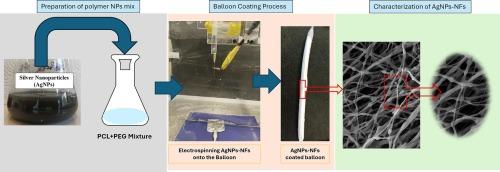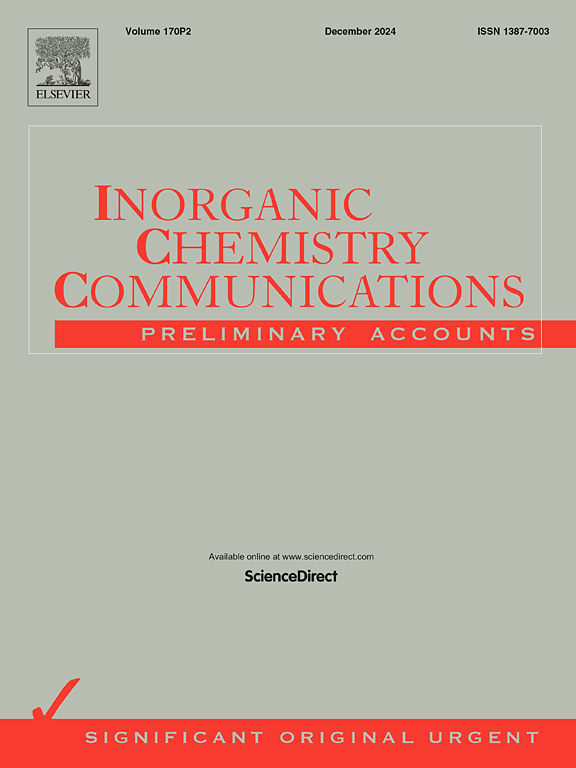Application of biogenic silver nanoparticle incorporated nanofibers in biomedical science
IF 4.4
3区 化学
Q1 CHEMISTRY, INORGANIC & NUCLEAR
引用次数: 0
Abstract
The applications of nanotechnology are expanding into medical science for designing new medical devices related products. These products can deliver targeted therapies to diseases such as cancer and peripheral artery treatment. Therefore, with the goal to treat peripheral artery disease, we integrated biogenic silver nanoparticles (AgNPs) into polyethylene glycol-polycaprolactone (PEG-PCL) nanofibrous (NFs). The AgNPs-NFs mats were successfully fabricated using a blended electrospinning process. AgNPs with average sizes of 35–55 nm were produced and characterized using multiple techniques such as UV–Vis spectroscopy, TEM, SEM and FTIR. Nanofibrous membranes containing 1 %, 2 %, and 3 % AgNPs by weight were developed, showing a reduction in fiber diameter from 473 nm to 179 nm due to the introduction of charged particles. The scaffold’s suitability and drug release profile were critically analyzed, revealing results consistent with optimal biomedical applications. Preliminary studies indicated that AgNPs dose-dependent inhibition of human umbilical vein endothelial cells (HUVECs) may potentially help prevent atherosclerosis. These findings underscore the potential of AgNPs integrated PEG-PCL NFs mats for advanced biomedical applications.

生物银纳米粒子纳米纤维在生物医学中的应用
纳米技术的应用正扩展到医学领域,用于设计新的医疗设备相关产品。这些产品可为癌症和外周动脉治疗等疾病提供靶向疗法。因此,为了治疗外周动脉疾病,我们在聚乙二醇-聚己内酯(PEG-PCL)纳米纤维(NFs)中加入了生物银纳米粒子(AgNPs)。AgNPs-NFs 垫采用混合电纺工艺成功制成。制备出平均尺寸为 35-55 nm 的 AgNPs,并利用紫外可见光谱、TEM、SEM 和 FTIR 等多种技术对其进行了表征。按重量计,纳米纤维膜含有 1%、2% 和 3% 的 AgNPs,由于引入了带电粒子,纤维直径从 473 nm 减小到 179 nm。对支架的适用性和药物释放情况进行了严格分析,结果显示其符合最佳生物医学应用。初步研究表明,AgNPs 对人脐静脉内皮细胞(HUVECs)的剂量依赖性抑制可能有助于预防动脉粥样硬化。这些发现强调了 AgNPs 集成 PEG-PCL NFs 垫在先进生物医学应用中的潜力。
本文章由计算机程序翻译,如有差异,请以英文原文为准。
求助全文
约1分钟内获得全文
求助全文
来源期刊

Inorganic Chemistry Communications
化学-无机化学与核化学
CiteScore
5.50
自引率
7.90%
发文量
1013
审稿时长
53 days
期刊介绍:
Launched in January 1998, Inorganic Chemistry Communications is an international journal dedicated to the rapid publication of short communications in the major areas of inorganic, organometallic and supramolecular chemistry. Topics include synthetic and reaction chemistry, kinetics and mechanisms of reactions, bioinorganic chemistry, photochemistry and the use of metal and organometallic compounds in stoichiometric and catalytic synthesis or organic compounds.
 求助内容:
求助内容: 应助结果提醒方式:
应助结果提醒方式:


